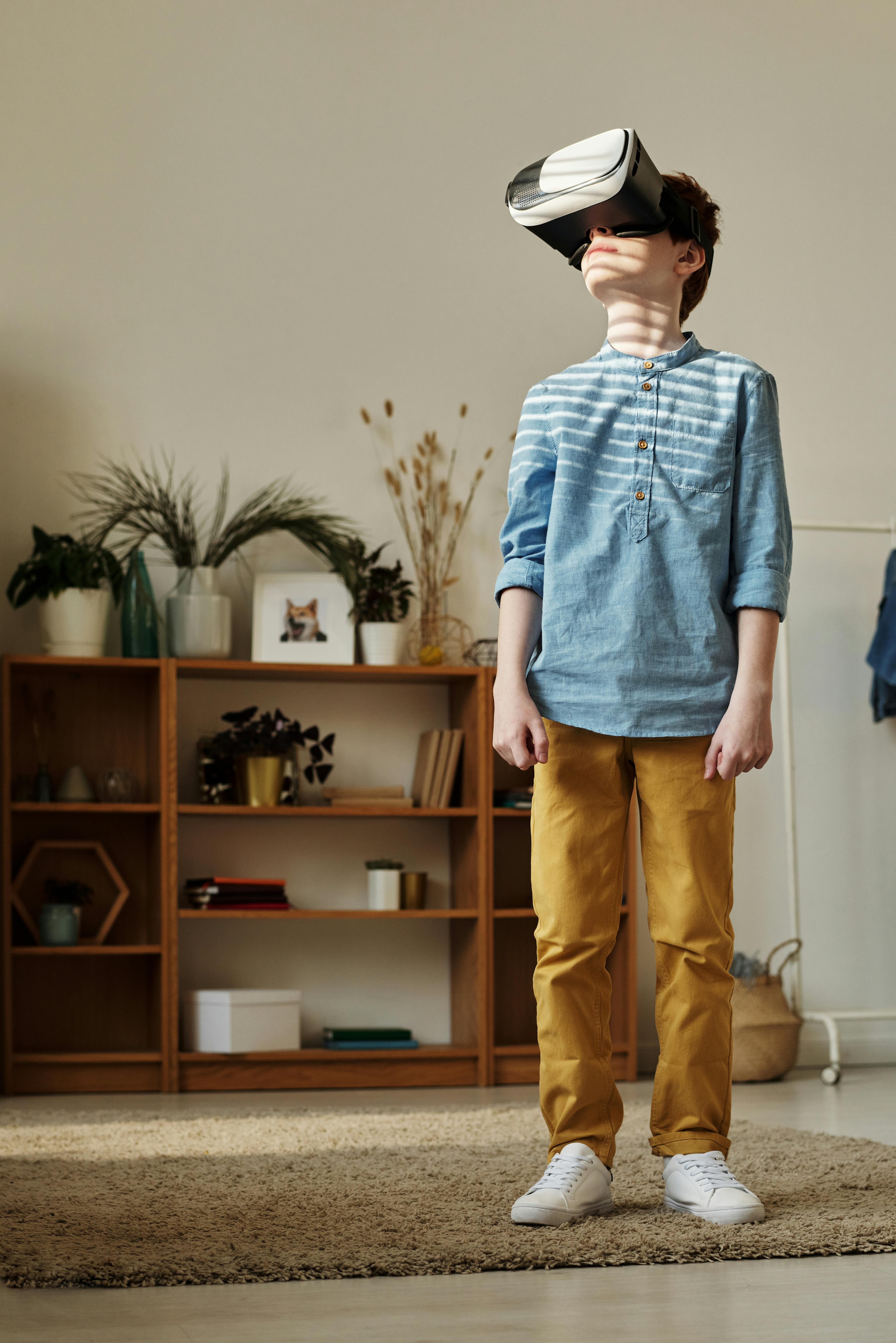In a world driven by constant connectivity and digital devices, finding ways to relax and unwind can be a challenge. However, adopting a mindful approach to technology use may hold the key to improving relaxation. By consciously choosing when and how to engage with our devices, we can create a healthier and more balanced relationship with technology, ultimately leading to enhanced relaxation and overall well-being. So, how exactly does adopting a mindful approach to technology use improve relaxation? Let’s explore the benefits and strategies in more detail.

The Impact of Technology on Relaxation
Technology plays a significant role in our lives, providing convenience and connectivity. However, it also affects our relaxation and overall well-being. In this article, we will explore the relationship between technology and relaxation, as well as delve into the negative effects that technology can have on our ability to unwind and de-stress.
Understanding the relationship between technology and relaxation
In today’s fast-paced world, technology has become an integral part of our daily lives. We rely on our smartphones, laptops, and other devices for work, entertainment, and communication. While technology offers numerous advantages, it can also hinder our ability to relax and find inner peace.
Screen time and constant connectivity can lead to feelings of being always “on.” The constant presence of technology can infringe on our personal space and make it difficult to disconnect and unwind. It is essential to understand the impact that technology has on our relaxation, in order to find ways to mitigate its negative effects.

Exploring the negative effects of technology on relaxation
While technology opens up a world of possibilities, it also has several negative effects on our ability to relax and find tranquility. One of the primary factors is the constant distractions that technology brings. Notifications, emails, and social media notifications steal our attention, making it challenging to focus on the present moment and relax.
Additionally, technology can become addictive. Apps and social media platforms are designed to grab our attention and keep us engaged for as long as possible. This can lead to excessive screen time, causing a strain on our eyes, concentration, and mental well-being. Moreover, excessive technology use can disrupt our sleep patterns, making it harder to achieve quality rest and relaxation.
What is Mindfulness?
To counteract the negative impact of technology on relaxation, adopting a mindful approach can be incredibly beneficial. Mindfulness is the practice of being fully present and engaged in the current moment, without judgment. It involves paying attention to one’s thoughts, feelings, and physical sensations with a sense of openness and acceptance.
Defining mindfulness and its principles
Mindfulness is a practice that originated from Buddhist traditions and has now gained popularity in the Western world. It involves focusing on the here and now, rather than dwelling on the past or worrying about the future. Mindfulness encourages us to observe our thoughts and emotions without judgment, promoting a sense of calm and acceptance.
The principles of mindfulness include cultivating awareness, non-judgment, and compassion. By becoming more aware of our thoughts, sensations, and surroundings, we can detach from the external distractions of technology and foster a deeper connection with ourselves and the present moment.
Exploring the benefits of mindfulness
Mindfulness has been extensively researched and has shown numerous benefits for our well-being and relaxation. Regular mindfulness practice can reduce stress, anxiety, and depression. It enhances our ability to regulate emotions and cope with challenging situations, promoting a sense of inner peace and relaxation.
Furthermore, mindfulness improves our attention and focus, enabling us to better manage distractions caused by technology. It also enhances our overall well-being, leading to improved physical and mental health. By adopting mindfulness techniques, we can counteract the negative effects of technology and create a healthier relationship with our devices.

How Technology Affects Mindfulness
While mindfulness can be a powerful tool to combat the negative effects of technology on relaxation, it is essential to understand how technology itself affects our ability to practice mindfulness effectively.
Understanding the distractions caused by technology
One of the main challenges of practicing mindfulness in the digital age is the constant distractions that technology brings. The notifications, alerts, and endless stream of information can make it difficult to stay present and focused. It is crucial to recognize these distractions and find ways to minimize their impact.
One effective strategy is to create technology-free zones or times during the day. By dedicating specific periods to disconnecting from screens and being fully present, we can cultivate a more mindful approach to technology use. This can be as simple as turning off notifications during meal times or designating a technology-free hour before bedtime.
Discussing the addictive nature of technology
Another factor that affects mindfulness is the addictive nature of technology. Apps, social media platforms, and online games are designed to engage our attention and keep us coming back for more. This constant stimulus can make it challenging to break free from the lure of technology and focus on the present moment.
To address this, it is important to set boundaries and limits on technology usage. By consciously regulating our screen time and creating space for mindfulness practice, we can regain control over our relationship with technology. Mindfulness techniques, such as breath awareness or body scans, can be incorporated into our daily routine to counteract the addictive pull of technology.
The Role of Mindfulness in Relaxation
Mindfulness and relaxation are closely intertwined, as mindfulness practices can promote a state of deep relaxation and tranquility. By incorporating mindfulness into our daily lives, we can enhance our ability to relax and find inner peace.
Exploring how mindfulness promotes relaxation
Mindfulness promotes relaxation by allowing us to become aware of our present moment experience. By focusing on our breath, bodily sensations, or the sounds around us, we can anchor ourselves in the present and alleviate stress and tension. Mindfulness techniques, such as progressive muscle relaxation or guided imagery, can deepen the relaxation response in the body and mind.
By practicing mindfulness regularly, we cultivate a state of mental clarity and calmness that extends beyond our formal mindfulness sessions. This carries over into our daily lives, enabling us to navigate stressful situations with greater ease and find moments of relaxation amidst the busyness of life.
Discussing the connection between mindfulness and stress reduction
Stress is a ubiquitous part of modern life, and it can have detrimental effects on our well-being and relaxation. Mindfulness has been shown to be a powerful tool in reducing stress levels. By bringing attention to our thoughts, emotions, and bodily sensations, we can better understand and manage our responses to stress.
Mindfulness helps to break the cycle of rumination and worry that often accompanies stress. By becoming more aware of our thoughts and emotions, we can observe them without judgment and develop a more compassionate and accepting attitude towards ourselves. This shift in perspective can significantly reduce stress levels and promote relaxation.
Tips for Adopting a Mindful Approach to Technology Use
Now that we understand the importance of mindfulness in promoting relaxation and countering the negative effects of technology, let’s explore some practical tips for adopting a mindful approach to technology use.
Setting boundaries and limits on technology usage
One of the first steps in adopting a mindful approach to technology use is setting boundaries and limits on our screen time. This can involve designating specific periods of the day for technology use and creating technology-free zones in our homes or workplaces. By setting clear boundaries, we create space for relaxation and mindfulness.
It can also be helpful to establish a technology bedtime routine. This involves disconnecting from screens at least an hour before bed and engaging in activities that promote relaxation, such as reading, journaling, or taking a warm bath. By creating a buffer zone between technology and sleep, we can improve the quality and quantity of our rest.
Practicing mindfulness techniques while using technology
Another way to incorporate mindfulness into our technology use is by integrating mindfulness techniques into our daily routine. For example, we can practice mindful breathing or body awareness while waiting for a webpage to load or while using our smartphones. This allows us to stay present and focused, even in the midst of technology use.
Mindful app usage can also be beneficial. Many apps are now available that promote mindfulness and relaxation. These apps offer guided meditations, breathing exercises, and stress reduction techniques. By incorporating these apps into our technology usage, we can integrate mindfulness into our daily lives seamlessly.
The Benefits of Mindful Technology Use on Relaxation
By adopting a mindful approach to technology use, we can enhance our relaxation and overall well-being. There are numerous benefits to embracing mindfulness in our digital lives.
Improving sleep quality and quantity
One of the primary benefits of mindful technology use is improved sleep quality and quantity. The blue light emitted by screens can disrupt our sleep patterns, making it harder to fall asleep and achieve restful sleep. By setting boundaries and limits on screen time and practicing mindfulness techniques before bed, we can improve our sleep hygiene and enhance our ability to relax and recharge.
Enhancing overall well-being and mental health
Regular mindfulness practice has been shown to have numerous mental health benefits. By reducing stress levels, promoting emotional regulation, and improving overall well-being, mindfulness can enhance our ability to relax and find inner peace. Mindful technology use allows us to harness the power of technology while mitigating its negative effects, leading to greater mental and emotional well-being.
Mindful Apps and Tools to Enhance Relaxation
To support our journey towards relaxation and mindfulness, there are various apps and tools available that can assist in cultivating a mindful approach to technology use.
Reviewing popular apps for mindfulness and relaxation
Many popular apps offer mindfulness and relaxation practices. Apps like Headspace, Calm, and Insight Timer provide guided meditations, breathing exercises, and stress reduction techniques. These apps can be used alongside technology to create a balanced relationship with screens and promote relaxation.
Exploring wearable devices that promote mindful technology use
Wearable devices, such as smartwatches and fitness trackers, can also support a mindful approach to technology use. These devices often have features that encourage movement, mindfulness, and relaxation. For example, they may include reminders to take breaks and engage in mindful breathing exercises. By leveraging wearable technology, we can integrate mindfulness into our daily lives in a seamless and accessible way.
Case Studies: How Mindful Technology Use has Improved Relaxation
Real-life examples can provide inspiration and insight into how adopting a mindful approach to technology use has improved relaxation for individuals.
Sharing real-life examples of individuals benefiting from mindful technology use
John, a software engineer, found himself constantly stressed and anxious due to his excessive screen time. However, after incorporating mindfulness into his technology use, he noticed a significant improvement in his ability to relax and unwind. By setting boundaries on his screen time and practicing mindfulness techniques, such as breath awareness and body scans, John was able to find a better balance between technology and relaxation.
Sara, a college student, struggled with anxiety and sleep difficulties. By embracing mindfulness and using technology mindfully, she discovered a newfound sense of calm and relaxation. Sara incorporated mindfulness apps into her daily routine and set technology-free times before bed. These simple changes allowed her to manage her stress levels more effectively and improve the quality of her sleep.
Highlighting specific techniques and strategies employed
Both John and Sara found success in adopting mindful technology use by combining various strategies. They both set boundaries on their screen time, created technology-free zones in their homes, and integrated mindfulness techniques into their daily routines. By prioritizing their well-being and relaxation, they were able to utilize technology as a tool for mindfulness rather than a source of stress.
Challenges and Obstacles in Adopting a Mindful Approach
While adopting a mindful approach to technology use can have numerous benefits, it is essential to acknowledge and address the challenges and obstacles that may arise along the way.
Identifying potential barriers to implementing mindful technology use
One common barrier is the fear of missing out (FOMO). The constant connectivity that technology provides can create a sense of urgency and the fear of not being up-to-date or informed. Overcoming FOMO requires a shift in mindset and a recognition that relaxation and well-being are more important than constant engagement with technology.
Another challenge is the societal pressure to be always available and responsive. A mindful approach to technology use requires setting boundaries and limits, which may be met with resistance or misunderstandings. Clear communication and the willingness to prioritize self-care and relaxation are essential in navigating these challenges.
Discussing strategies to overcome these obstacles
To overcome these obstacles, it is important to cultivate a strong intention and commitment to prioritize relaxation and well-being. This involves setting clear goals and reminding ourselves of the benefits that mindful technology use can bring.
Practicing self-compassion is also crucial. It is natural to encounter setbacks or moments of slip-ups when trying to adopt a mindful approach. By treating ourselves with kindness and understanding, we can get back on track and continue to prioritize relaxation and mindfulness.
Conclusion: Embracing Mindfulness for Technology-Based Relaxation
In conclusion, adopting a mindful approach to technology use can have a profound impact on our ability to relax and find inner peace. By recognizing the negative effects of technology on our relaxation, understanding the principles of mindfulness, and incorporating mindfulness techniques into our daily lives, we can counteract the distractions and addictive nature of technology.
Setting boundaries and limits on technology usage, practicing mindfulness techniques while using technology, and embracing mindful apps and tools can further enhance our relaxation and overall well-being. Real-life examples demonstrate the transformative power of mindful technology use, and strategies are in place to overcome challenges and obstacles.
By prioritizing relaxation through mindful technology use, we can create a healthier and more balanced relationship with our devices, leading to improved sleep, enhanced well-being, and a greater sense of inner peace. So, take a deep breath, unplug, and embrace mindfulness for technology-based relaxation. Your mind and body will thank you.
